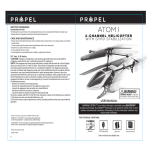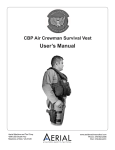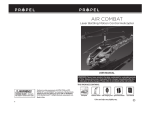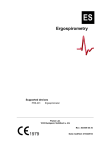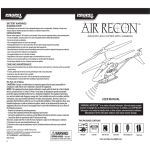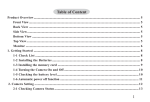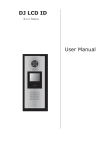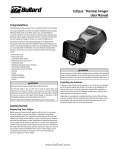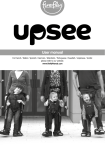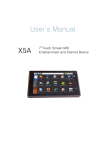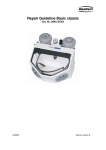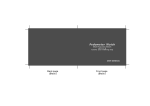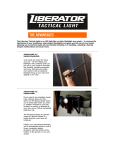Download SPEED STAR
Transcript
SPEED STAR Ultra-light. Ultra-fast. For all skill levels. BC Table of contents Warnings and Cautions . . . . . . . . . . . . . . . . . . . . . . . . . . . . . . . . . . . . . . . . . . . . . . . . . . . . . . . . . . . . . . 2 FCC Information . . . . . . . . . . . . . . . . . . . . . . . . . . . . . . . . . . . . . . . . . . . . . . . . . . . . . . . . . . . . . . . . . . . . 6 Location of Parts and Controls . . . . . . . . . . . . . . . . . . . . . . . . . . . . . . . . . . . . . . . . . . . . . . . . . . . . . . . 7 Remote Control Battery Installation . . . . . . . . . . . . . . . . . . . . . . . . . . . . . . . . . . . . . . . . . . . . . . . . . . 9 Charging the Interchangeable Battery . . . . . . . . . . . . . . . . . . . . . . . . . . . . . . . . . . . . . . . . . . . . . . . 10 Helicopter Battery Installation . . . . . . . . . . . . . . . . . . . . . . . . . . . . . . . . . . . . . . . . . . . . . . . . . . . . . . 11 Operation: Preparing for Flight . . . . . . . . . . . . . . . . . . . . . . . . . . . . . . . . . . . . . . . . . . . . . . . . . . . . . . 12 Syncing Your Helicopter . . . . . . . . . . . . . . . . . . . . . . . . . . . . . . . . . . . . . . . . . . . . . . . . . . . . . . . . . . . . 12 Flying Tips . . . . . . . . . . . . . . . . . . . . . . . . . . . . . . . . . . . . . . . . . . . . . . . . . . . . . . . . . . . . . . . . . . . . . . . . 13 Understanding Helicopter Trim Adjustments . . . . . . . . . . . . . . . . . . . . . . . . . . . . . . . . . . . . . . . . . 14 Speed Select Button . . . . . . . . . . . . . . . . . . . . . . . . . . . . . . . . . . . . . . . . . . . . . . . . . . . . . . . . . . . . . . . 17 Channel Select Button . . . . . . . . . . . . . . . . . . . . . . . . . . . . . . . . . . . . . . . . . . . . . . . . . . . . . . . . . . . . . 17 3 Channel Flight Control (Beginner) . . . . . . . . . . . . . . . . . . . . . . . . . . . . . . . . . . . . . . . . . . . . . . . . . 17 4 Channel Flight Control (Advanced) . . . . . . . . . . . . . . . . . . . . . . . . . . . . . . . . . . . . . . . . . . . . . . . . 19 Parts Replacement Instruction . . . . . . . . . . . . . . . . . . . . . . . . . . . . . . . . . . . . . . . . . . . . . . . . . . . . . . 21 Helicopter Propeller System . . . . . . . . . . . . . . . . . . . . . . . . . . . . . . . . . . . . . . . . . . . . . . . . . . . . . . . . 21 Replacing Connecting Rod and Direction Connecting Rod . . . . . . . . . . . . . . . . . . . . . . . . . . . . 22 Replacing the Upper Propeller Blade . . . . . . . . . . . . . . . . . . . . . . . . . . . . . . . . . . . . . . . . . . . . . . . . 23 Replacing the Tail Propeller Blade . . . . . . . . . . . . . . . . . . . . . . . . . . . . . . . . . . . . . . . . . . . . . . . . . . . 24 1 CAUTION • T O REDUCE THE RISK OF ELECTRIC SHOCK, DO NOT REMOVE COVER. THERE ARE NO SERVICEABLE PARTS INSIDE. • T O REDUCE THE RISK OF FIRE OR ELECTRIC SHOCK, DO NOT EXPOSE THIS UNIT TO RAIN OR MOISTURE. The lightning flash with arrow-head symbol within an equilateral triangle is intended to alert the user to the presence of uninsulated “dangerous voltage” within the unit’s enclosure that may be of sufficient magnitude to constitute a risk of electric shock. The exclamation point within an equilateral triangle is intended to alert the user to the presence of important operating and maintenance (servicing) instructions in the literature accompanying the unit. IMPORTANT SAFETY INSTRUCTIONS All of the safety and operating instructions should be read, adhered to and followed before the unit is operated. Save these instructions 2 DANGER To reduce the risk of electric shock, burns, fire or injury: 1. 2. 3. 4. 5. Do not use while bathing or in a shower. Do not place or store unit where it can fall or be pulled into a tub or sink. Do not place in, drop or submerge in water or other liquid. Do not reach for unit that has fallen into water. Unplug it immediately. Care should be taken so that objects do not fall and liquids are not spilled onto the unit. WARNING 1. 2. 3. 4. 5. 6. 7. 8. 9. 10. 3 dult supervision is recommended when using this product. A Use this unit only for its intended use as described in this manual. Unplug this unit during lightning storms or when unused for long periods of time. Never drop or insert an object into any opening. Protect the adapter cord from being walked on or pinched, particularly at plug outlets, convenience receptacles and the point where it exits the unit. Do not allow adapter cord to touch hot surfaces. Wrap cord loosely around the unit when storing. The unit should be situated away from direct sunlight or heat sources such as radiators, electric heaters, heat registers, stoves, or other units (including amplifiers) that produce heat. Avoid placing on top of stereo equipment that radiates heat. Never block the air openings of the unit with materials such as clothing, plastic bags or papers, or place it on a soft surface such as a bed or couch, where the air openings may be blocked. Do not overload electrical outlet. Use only the power source as indicated. Do not carry this unit by cord or use cord as handle. 11. N ever operate this unit if it has a damaged cord or plug, if it is not working properly, or if it has been dropped or damaged, or dropped into water. If the unit’s power supply cord or plug is damaged, do not attempt to fix it yourself. 12. To avoid the risk of electric shock, do not disassemble or attempt to repair the unit. Incorrect repair can cause risk of electric shock or injury to persons when unit is used. 13. Do not operate in the presence of explosive and/or flammable fumes. 14. Never remove the adapter plug from the socket by pulling the power cord. HELICOPTER WARNING The helicopter blades revolve at high speeds and can harm the user, other people, and animals. Stand away from the helicopter to reduce the risk of getting into the flight path. Warn others that you will be flying your helicopter so that they are aware of its position. Before flight, inspect the rotor blades to make certain that the blades are securely fastened to the helicopter. WARNING! • Choking/Cutting Hazard. Small Parts/Sharp Rotor Blades. • Keep hands, hair and loose clothing away from the propeller when the power switch is turned to the ON position. • Turn off the remote control and helicopter power switches when not in use. • New alkaline batteries in the remote are recommended for maximum performance. BATTERY WARNINGS Interchangeable BATTERY • T his helicopter uses an interchangeable Li-Po rechargeable battery. If the battery no longer stays charged, dispose of battery properly according to local disposal requirements. • The adapter is built specifically for the helicopter’s Li-Po battery. Do not use it to charge any other battery. 4 • A LWAYS handle Li-Po batteries with extreme caution. NEVER place the Li-Po helicopter battery in a place where the contact tabs could inadvertently be connected to each other via coins, keys, tools or any other metallic objects. If anything happens to complete the circuit across the connect tab the batteries will likely be damaged and may cause injury. • Do not directly solder the battery or pierce it with a nail or other sharp object. • Do not short circuit the battery’s supply terminals. • Do not disassemble or alter the battery. • Charge the battery every six months. • Recycle used batteries after covering the battery terminals with insulation tape or inserting the battery into an individual polybag. Remote CONTROL BATTERIES Remote control requires 6 AA batteries (not included). Please read the important battery safety warning below. 1. Do not mix alkaline, standard (carbon-zinc) and rechargeable batteries (Nickel Metal Hydride). 2. Do not mix old and new batteries. 3. Non-rechargeable batteries are not to be recharged. 4. Exhausted batteries should be removed immediately and must be recycled or disposed of properly according to state or local government ordinances and regulations. 5. The supply terminals are not to be short-circuited. 6. Only batteries of the same or equivalent type as recommended are to be used. 7. B atteries are to be inserted with the correct polarity (see inside this manual for diagram). 8. Do not dispose of batteries in a fire as batteries may leak or explode. 5 FCC INFORMATION This device complies with Part 15 of the FCC Rules. Operation is subject to the following two conditions: 1. This device may not cause harmful interference. 2. This device must accept any interference received including interference that may cause undesired operation. Warning: Changes or modifications to this unit not expressly approved by the party responsible for compliance could void the user’s authority to operate the equipment. Note: This equipment has been tested and found to comply with the limits for a Class B digital device, pursuant to Part 15 of the FCC Rules. These limits are designed to provide reasonable protection against harmful interference in a residential installation. This unit generates, uses, and can radiate radio frequency energy and if not installed and used in accordance with the instructions, may cause harmful interference to radio communications. However, there is no guarantee that interference will not occur in a particular installation. If this equipment does cause harmful interference to radio or television reception, which can be determined by turning the equipment off and on, the user is encouraged to try and correct the interference by one or more of the following measures: • Reorient or relocate the receiving antenna. • Increase the separation between the equipment and receiver. • Connect the equipment to an outlet on a circuit different from that to which the receiver is connected. • Consult the dealer or an experienced radio/TV technician for help. Contents: 1 propeller blade set 4 connecting rods 2 swivel brackets 1 tail rotor 4 screws 6 Location of parts and controls (copter) Stabilizer Bar Main Rotor Blades Interchangeable Head Tail Rotor Blade Power Indicator Light Interchangeable Battery Landing Gear Remote Control Display Speed Mode Indicator Throttle Indicator Throttle Trim Indicator Direction Trim Indicator 4 CH Battery Channel Mode Indicator Turning Direction Forward & Backward Trim Banks Trim Indicator Forward & Backward Banks Left and Right 7 Location of parts and controls (Remote control) Antenna Power Indicator Light Speed Select Button Channel Select Button Throttle Sensitive Trim Forward & Backward Trim Throttle, Left & Right Turning Control Direction Trim Forward & Backward, Banks Left & Right Control Power On/Off Banks Trim 8 REMOTE CONTROL BATTERY INSTALLATION 1. Remove the battery cover and battery pack from the remote control. 2. Install 6 AA alkaline batteries into the battery pack according to the polarity indicators and then install the pack in the remote as shown in the diagram below. 3. Replace the battery cover. Battery Compartment 9 Battery Cover CHARGING THE INTERCHANGEABLE BATTERY This helicopter comes with one interchangeable battery, make sure to fully charge the battery before you fly the helicopter. Plug the battery into the included charger (A). Charging from remote control (B): • C onnect the charging plug on the back of remote control to the charging socket and switch on your remote. The red LED light will illuminate on the charger. When the battery is fully charged, the red LED light will turn off. A Charging from the USB cable (C): • P lug the included USB cable into a USB port on your computer, making sure that your computer is turned on. When the batteries are charging, the red LED light will illuminate on the charger. When the battery is fully charged, the red LED light will turn off. B Note: Length of charging time will vary depending C on percentage of the helicopter battery power left and, if you are charging from the remote, the condition of the batteries in the remote. Average charging time is approximately 45 minutes with new batteries in the remote. The helicopter operates for approximately 5-6 minutes per charge. Important! Always disconnect charger cord after charging. Never leave charger cord connected to helicopter overnight or for extended periods of time. 10 Helicopter battery Installation 1. W hen the interchangeable battery is fully charged, load it into the battery compartment of the helicopter. 2. Keep the battery’s metal edge facing the helicopter’s battery socket. Slide the battery into the helicopter’s battery socket until it stops. 3. When the battery is seated correctly, the red LED light will flash. 11 Operation: Preparing for flight • V erify that there are 6 “AA” batteries inside the remote control unit and the helicopter's batteries are all installed correctly. • Stand in a large space with an open radius of at least 50 feet. • M ake sure the empty space has no obstacles or nearby water. Set your helicopter on a clean, flat surface before take-off. WARNING! DO NOT ATTEMPT TO FLY YOUR HELICOPTER OUTDOORS IF THERE IS RAIN, SNOW, HEAVY WINDS, THUNDER OR LIGHTNING. IT COULD DAMAGE YOUR HELICOPTER AND POSSIBLY EVEN CAUSE BODILY HARM. Syncing your helicopter Your helicopter utilizes an automatic 2.4G channel selection system that allows up to 8 people to fly side by side in the same wireless range. For One-Person Play: 1. B efore starting, make sure that the power on the remote is in the OFF position. Also make sure that there are no other 2.4G devices in the area. 2. Install the interchangeable battery into the helicopter and set it down on a flat surface. The red LED indicators inside the helicopter body should flash. 3. O N the remote , pull the throttle all the way down, then turn ON your remote. The remote will beep in 3-5 seconds. When you hear a long beep, the red LED indicators inside the body should stay red. This indicates that your helicopter and remote have successfully synced. 12 For Multi-Person Play: 1. B efore starting, make sure that the power on the remote is in the OFF position. Also make sure that there are no other 2.4G devices in the area. 2. E ach person will have to sync their helicopter individually, at a different time, to avoid interference. Follow steps 1 to 3 under “Syncing your helicopter,” making sure no one else is attempting to sync at the same time. 3. After syncing one helicopter, that helicopter should be left ON until all players have succeeded in syncing their helicopters. 4. S hould there be a mistake or interference in syncing, all players must turn off their remotes and helicopters and start the syncing process again. FLYING TIPS • Fly the helicopter in a wide indoor/outdoor space, with least a 25-foot radius. • This helicopter is designed for either indoor or outdoor use. • Adult supervision is suggested at all times. • If you are flying the helicopter with others, make sure all spectators are behind you. • F or best performance, it is recommended that you operate the helicopter in zero wind conditions. Close all open doors or windows, and turn off any nearby fans. Wind can greatly affect the performance of the helicopter. 13 HELICOPTER TRIM ADJUSTMENTS Turn Left/Right Trim • If your helicopter nose rotates to the left or right uncontrollably, you may need to utilize the DIRECTION TRIM buttons. • If your helicopter over-rotates CLOCKWISE (to the right), push and release the DIRECTION TRIM button repeatedly to the left until the turning stops and proper flight is maintained. • If your helicopter over rotates COUNTERCLOCKWISE (to the left), push and release the DIRECTION TRIM button to the right until the turning stops and proper flight is maintained. • O ccasionally, you may have to adjust the DIRECTION TRIM to left and right to ensure the helicopter will fly straight and respond accurately to control commands. Direction Trim im Direction Trim Controls It over rotates to the right… It over rotates to the left… Push to left Push to right 14 Forward/Backward Trim • If your helicopter is moving forwards or backwards automatically, you may need to adjust the FORWARD/BACKWARD TRIM buttons. • If your helicopter flies forward, push and release the FORWARD/BACKWARD TRIM button back repeatedly until the moving stops and proper flight is maintained. • If your helicopter flies backwards, push and release the FORWARD/BACKWARD TRIM button forward until the moving stops and proper flight is maintained. • O ccasionally, you may have to adjust the FORWARD/BACKWARD TRIM to ensure the helicopter will hover in mid-air and respond accurately to your commands. Forward/Backward Trim d Forward/Backward Trim Controls 15 Push to go backward Push to go forward Banks Left/Right Trim • If your helicopter is not steadily hovering and is banking to the left or right automatically, you may need to adjust the BANKS TRIM buttons. • If your helicopter banks to the left, push and release the BANKS TRIM button repeatedly to the right until the banking stops and proper flight is maintained. • If your helicopter banks to the right, push and release the BANKS TRIM button to the left until the banking stops and proper flight is maintained. • O ccasionally, you may have to adjust the BANKS TRIM to ensure the helicopter will steadily hover in mid-air and respond accurately to your commands. Banks Trim BanksTrim Controls Push to go right Push to go left Throttle Speed Trim • If you find the throttle is too sensitive when you fly the helicopter, you may need to utilize the Throttle speed trim. • P ush and release the Throttle speed trim button back to lower the sensitivity of the throttle. Push and release the Throttle speed trim button forward to increase the sensitivity of the throttle. The middle position is recommended. 16 SPEED SELECT BUTTON Press the SPEED SELECT button on the upper left of the remote control and your helicopter will change to high-speed mode [MODE 2]. Press the SPEED SELECT button a second time to go back to normal speed [MODE 1]. Note: The use of high-speed mode [MODE 2] is recommended for outdoor use only. CHANNEL SELECT BUTTON Press the CHANNEL SELECT button on the top right of the remote control to toggle between Three-Channel (Beginner Mode) and Four-Channel (Advanced Mode) modes. You should successfully pilot the helicopter in Three-Channel Mode, before advancing to Four-Channel Mode. Three-cHannel FLIGHT CONTROL (Beginner) On the following pages is a list of basic flight functions for your long-range remote control helicopter. While learning to fly your helicopter, start with a large indoor room until you get used to the basic controls. As you master flying your helicopter, you can move to more advanced maneuvering techniques. When you have these basic steps down you can move to the next level. 17 Move the Throttle forward to increase Move the Throttle backward to decrease the speed of the main rotor the speed of the main rotor and the and the helicopter will descend. helicopter will rise. Move the Direction Control left and the helicopter will turn left. Move the Direction Control right and the helicopter will turn right. Move the Direction Control up and the helicopter will move forward. Move the Direction Control down and the helicopter will move backward. 18 Four-cHannel FLIGHT CONTROL (advanced) 19 Move the Throttle forward to increase the speed of the main rotor and the helicopter will rise. Move the Throttle backward to decrease the speed of the main rotor and the helicopter will descend. Move the Throttle left and the helicopter will turn left. Move the Throttle right and the helicopter will turn right. Move the Direction Control up and the helicopter will move forward. Move the Direction Control down and the helicopter will move backward. Move the Direction Control left and the helicopter will bank to the left. Move the Direction Control right and the helicopter will bank to the right. 20 Helicopter PROPELLER SYSTEM Your helicopter propeller system is a precision instrument that may need repair or replacement from time to time for optimal flight function. Crash landing from highspeed aerial flights may cause damage to your helicopter's propeller or propeller connecting rods. TROUBLESHOOTING: If your helicopter loses its ability to fly correctly, please inspect the propeller system carefully for the following three common issues: 1. B roken connecting rod. Replacing Connecting Rod: The connecting rod is a small “handcuff” style device that stabilizes the “upper” propellers. There are 2 connecting rods on the upper propeller. Please see Diagram 1. If a connecting rod is broken or missing simply replace it by removing the broken one and replacing it with a new one. You may have to use slight pressure when reattaching both ends of the new connecting rod. Make sure that the new connecting rod is secured and locked in place. See Diagram 2. When changing the connecting rod, make sure there is no damage to the actual blade or arm that holds the connecting rod in place. If there is, you must replace the entire blade system. 2. B roken propeller. Replacing Propeller: The propeller is subject to damage as you learn to properly fly and control your helicopter. If, after a crash, your helicopter loses control easily or flies erratically you should carefully inspect your entire propeller system for any sign of damage. Most common are: cracked or chipped blades, broken connecting rod, frozen balance bar (this is when the balancing bar and blade are jammed and cannot move freely up and down). To replace the propeller blades follow diagrams 1 through 4 on page 23. 21 3. B roken tail propeller. Replacing Tail Propeller Blade: If, after a crash, your helicopter tail propeller blade is damaged, please replace it by following diagrams 5 through 8 on page 24. Replacing connecting rodS and SWIVEL BRACKETS Diagram 1 There are 2 propeller connecting Broken connecting rod. rods on the propeller and 2 direction connecting rods. Broken connecting rod. Diagram 2 Replacing connecting rod. Proper connection. Disconnect connecting rod. Replace damaged swivel bracket. Diagram 3 Proper connection. 22 Replacing the propeller bladeS 1 Carefully disconnect the adjoining connecting rod from the blade system. 3 Carefully replace with new propeller and tighten the two screws. 23 2 Unscrew the two screws and remove the damaged blade. 4 Reconnect the connectiong rod. Replacing the tail propeller blade 5 Hold the middle part of the tail propeller and pull it straight up. 7 Carefully replace with a new one and put it in proper position. 6 Remove the broken tail propeller blade. 8 Push down. 24

























